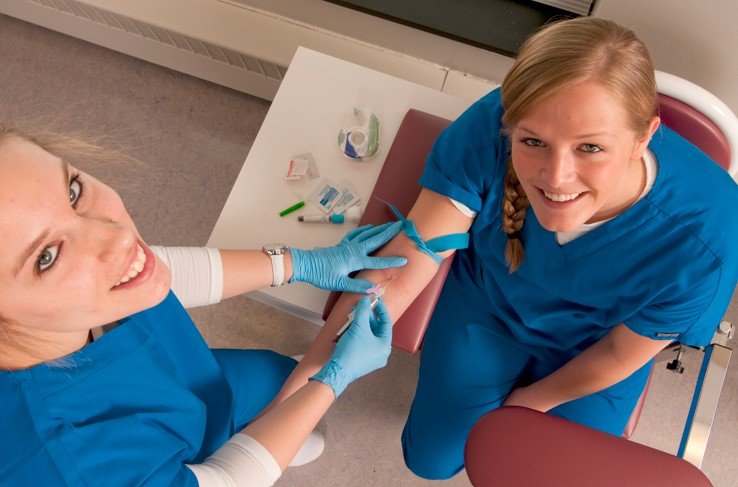Ensuring Compliance and Patient Safety in Medical Equipment Calibration
Summary
- Hospitals in the United States face strict Regulations regarding the calibration and maintenance of medical equipment to ensure accurate Test Results and compliance with industry standards.
- The use of advanced technology and automated systems has become essential in managing and tracking the maintenance schedules and calibration processes of medical equipment in hospitals.
- Ongoing staff training and education on proper equipment handling and maintenance procedures are crucial in preventing noncompliance issues and ensuring patient safety in healthcare facilities.
Hospitals in the United States are held to rigorous standards when it comes to maintaining and calibrating medical equipment. Accurate Test Results depend on the proper functioning of these devices, which play a critical role in diagnosing medical conditions, monitoring patients, and providing treatment. Noncompliance with regulatory requirements can lead to serious consequences, including compromised patient care, legal repercussions, and financial penalties.
Regulatory Requirements for Medical Equipment Calibration
The calibration of medical equipment is essential to ensure accurate measurements and reliable Test Results. Regulatory bodies such as the Food and Drug Administration (FDA) and the Joint Commission establish guidelines and standards for the calibration and maintenance of medical devices in healthcare settings. Some of the key requirements include:
- Regular calibration and maintenance schedules for all medical equipment.
- Documentation of calibration procedures and results for each device.
- Adherence to manufacturer's specifications and guidelines for calibration and maintenance.
- Quality Control measures to verify the accuracy and precision of Test Results.
Technological Advances in Equipment Management
With the increasing complexity and diversity of medical equipment used in hospitals, managing the calibration and maintenance of these devices has become more challenging. Hospitals are turning to technology to streamline these processes and ensure compliance with regulatory requirements. Some of the technological advances in equipment management include:
- Computerized maintenance management systems (CMMS) for tracking maintenance schedules and calibration procedures.
- RFID technology for asset tracking and inventory management.
- Data analytics and predictive maintenance tools to identify potential issues before they occur.
- Automation of calibration processes to reduce human error and ensure consistency.
Staff Training and Education
In addition to advanced technology, ongoing staff training and education are vital in ensuring the accuracy of medical equipment calibration and maintenance. Healthcare professionals who handle medical devices must be knowledgeable about proper maintenance procedures and safety protocols. Hospitals invest in training programs to ensure that staff members understand the importance of equipment management and comply with regulatory requirements. Key aspects of staff training include:
- Instruction on proper handling and storage of medical equipment.
- Training on calibration procedures and documentation requirements.
- Educating staff on the consequences of noncompliance and the impact on patient care.
- Encouraging a culture of accountability and responsibility for equipment maintenance.
Ensuring Compliance and Patient Safety
By incorporating advanced technology, implementing robust maintenance procedures, and focusing on staff training, hospitals in the United States can ensure accurate calibration and maintenance of medical equipment. Compliance with regulatory requirements is not only essential for avoiding noncompliance issues but also crucial for maintaining patient safety and delivering high-quality care. Healthcare facilities must prioritize equipment management to safeguard the well-being of patients and uphold the standards of the healthcare industry.

Disclaimer: The content provided on this blog is for informational purposes only, reflecting the personal opinions and insights of the author(s) on the topics. The information provided should not be used for diagnosing or treating a health problem or disease, and those seeking personal medical advice should consult with a licensed physician. Always seek the advice of your doctor or other qualified health provider regarding a medical condition. Never disregard professional medical advice or delay in seeking it because of something you have read on this website. If you think you may have a medical emergency, call 911 or go to the nearest emergency room immediately. No physician-patient relationship is created by this web site or its use. No contributors to this web site make any representations, express or implied, with respect to the information provided herein or to its use. While we strive to share accurate and up-to-date information, we cannot guarantee the completeness, reliability, or accuracy of the content. The blog may also include links to external websites and resources for the convenience of our readers. Please note that linking to other sites does not imply endorsement of their content, practices, or services by us. Readers should use their discretion and judgment while exploring any external links and resources mentioned on this blog.
